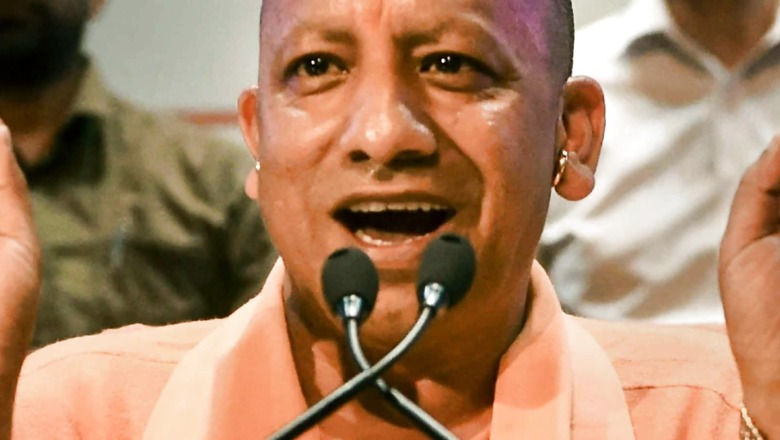
views
While the central government under the leadership of Prime Minister Narendra Modi took it upon itself to see the country through the first wave of the Covid-19 pandemic, the states were given the liberty to manage the second wave using their experience and learnings from the previous surge. While this decision may have brought cheer to detractors who have often accused the Modi government of undermining the federal structure, it was this accorded autonomy that truly divulged the infirmities and robustness of various state governments at the helm. One such success story that influencers are hesitant to applaud due to their inherent bias comes from the state of Uttar Pradesh.
Uttar Pradesh has reported fewer than 1,000 new cases a day for more than a month and fewer than 100 cases for two weeks. It reported its maximum number of new cases on April 24, i.e., 37,944. On this day, Maharashtra reported 67,160 cases, Kerala: 26,685. On June 21, when Maharashtra reported its lowest case count since April 1, i.e., 6,270, Uttar Pradesh reported just 163 new cases.
Right from his first budget onward, chief minister Yogi Adityanath has distributed resources across the state judiciously, matching needs with allocations. It is the same approach that has helped Uttar Pradesh arrest the pandemic across districts, including far-flung villages. However, while battling Covid, “whole” was coupled with “the sum of parts”. This approach of trickling administrative ways and means to the last block has set Uttar Pradesh apart from a state like Maharashtra, which has largely concentrated on the well-being of Mumbai.
Micro-monitoring
Despite the fading second wave and leading the country out of it, the Yogi government has been reluctant to let its guard down. Testing capacity in the state continues to increase: there were 33 testing labs in UP in June. It has been conducting on average more than 3 lakh tests per day. In tune with the population, close to 14% of the total tests in India have been conducted in Uttar Pradesh.
Last year in July itself, the CM had kick-started the formation of 1 lakh teams for effective surveillance; each team will be monitored by the respective district magistrate.
Door-to-door medical screening in urban areas and an increase in rapid antigen tests for districts with population less than 25 lakh has also ensured that the test-trace-treat strategy is implemented in spirit across the state, and not limited to politically important districts. In addition, Covid-19 tests of inmates of old age homes, juvenile homes and women’s shelters have also been a part of the monitoring system since last year.
Micromanaging
The chief minister, well aware of the dual battle faced by his government, i.e., of Covid-19 and perception, has been in the thick of things himself right from day one. His regular interactions with Team-11, a group of administrators selected to monitor the situation closely, was well-established during the first wave. However, knowing that the second wave was far more demanding than the first, Team-9 was formed, which was a blend of both lawmakers and policymakers: the former for keeping a vigil on the ground and the latter for facilitating aid and mobilising resources.
As SOS messages for medical oxygen inundated social media, chief minister Yogi Adityanath launched the digital platform ‘Oxygen Monitoring System for UP’ to monitor and ensure a smooth supply of oxygen in a timely manner for all government and private hospitals. Uttar Pradesh was the first state to introduce this system. It is now self-reliant in oxygen with 85+ oxygen plants functioning across 75 districts. The leadership plans to set up a total of 548 plants in the state.
In preparation for a possible third wave, the CM has now focussed his resources on setting up infrastructure for paediatric care, in case the virus attacks the young.
Micro-messaging
At its peak, when there were more than 30,000 active Covid cases in the state in the beginning of May, the CM had sent out a strong message to all his officials: “We have to protect villages from Covid infection at any cost.” This resolve has trickled downward in the system. Innovative policy responses such as including Lekhpals, Asha representatives, anganwadikatris, kotedars, rojgar sevaks, and chowkidars as part of the 60,569 surveillance committees (“nigrani samitis”) across 58,194 gram panchayats have been instrumental in sending the message across.
‘Mera Gaon, Corona Mukt Gaon’ is yet another step to ensure the whole state is free from Covid-19 infections.
Seven types of special booths were set up, including those for women, Abhibhavak booths for guardians/parents of children below 12 years of age, for hawkers and street vendors, for transportation workers, media personnel, judiciary members and other employees who are not a part of the front-line worker category. This once again carried the flavour of inclusive delivery of governance.
The novel ‘Pink Booth’ is an earthy step considering the social structures do perpetrate an inherent hesitancy among women to interact or share their concerns with the opposite gender, outside the family. One such booth has been set up in every district of the state. Similarly, in order to ensure the socio-economic hurdles do not frustrate the vaccination drive, special inoculation booths for vendors, rickshaw drivers, etc, have been organised.
Uttar Pradesh is leading the inoculation tally in both cumulative terms as well as giving doses to those in the age group of 18-44.
Critics cannot even allege a lack of data disclosure because near-zero SOS requests and declining burden in hospitals would immediately betray all such inaccurate claims.
The author is a political analyst. The views expressed in this article are those of the author and do not represent the stand of this publication.
Read all the Latest News, Breaking News and Coronavirus News here.




















Comments
0 comment